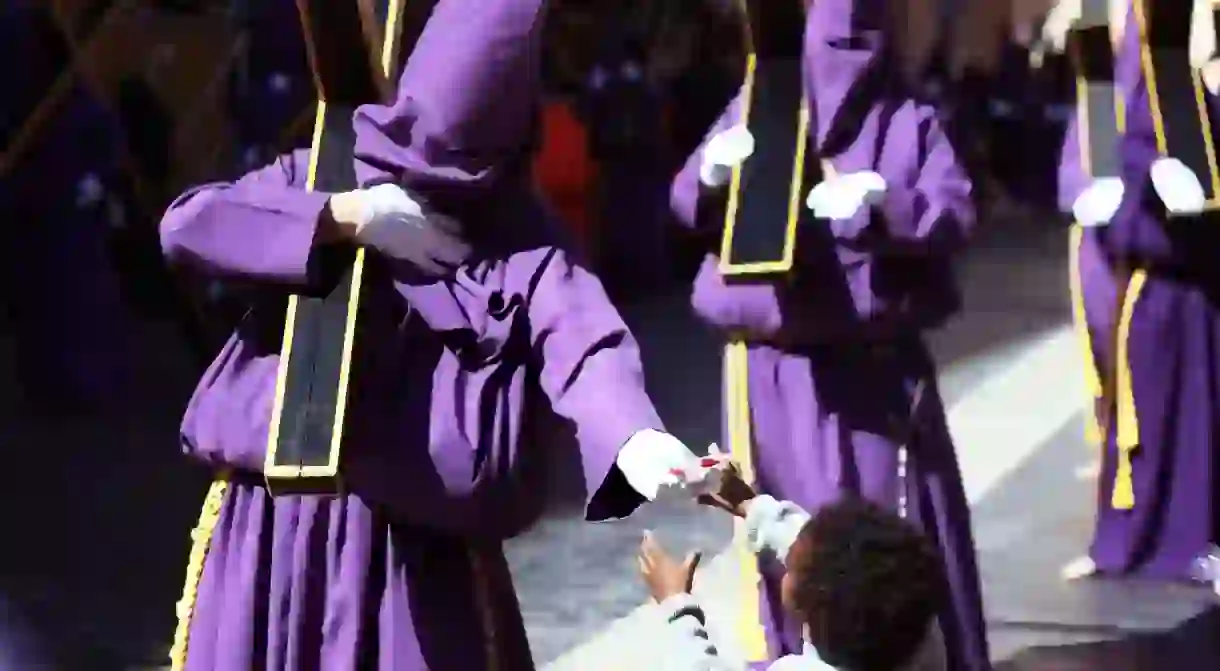Everything You Need to Know About Semana Santa Marinera, Valencia

Spain is famous for its Easter or Semana Santa parades. They’re known for being huge, lavish spectacles with a markedly sombre atmosphere. Scores of melancholy Virgin Marys in black veils take to the streets by candlelight, and those famous pointy-hatted costumes give everyone the chills. You’ll see such sights all around Spain – but not in Valencia.
Not everyone knows it, but Valencia’s is one place that doesn’t really celebrate Semana Santa, at least not in the city centre. Out by the beach however, in the maritime district of Grau-Cabanyal, the area has its own take on the parade and it’s very much worth seeing.

The celebration is a big part of the cultural identity of Valencia’s maritime district. Here, while the traditions are marked with the same respect as everywhere else and the traditions and costumes are similar, the parades have a more lively feel and the maritime district is filled with a party atmosphere for the two Easter holiday weeks.
Just over a century ago the small fishing towns of Grau and Cabanyal (now known as the Grau-Cabanyal district) were separated from Valencia by a few kilometres of farmland. The city’s rapid expansion has since swallowed up the area, which has always had its own customs and traditions distinct from those of the city. Residents, resistant to losing their identity, united around celebrations like this one and a lot of effort is made to keep the traditions alive.
The Easter festival in the region has now become a blend of religious tradition and political statement. For this reason, the celebration even has a slightly different name here; Semana Santa Marinera.
There are processions throughout the week featuring striking costumes, fireworks, music and a festive atmosphere on the streets. Bars and cafes fill up with local people enjoying drinks and tapas in the warm spring evenings.
On Holy Wednesday and Good Friday you’ll see the main parades with the most dramatic costumes, and especially on Friday when the celebrations continue well into the early hours. On Easter Sunday, marking the day of Christ’s resurrection, the festival gets even livelier. Watch your head as people throw everything from water to ceramic pots and plates from balconies in celebration. Huge firework displays light up the coastline, and people party all night long.













